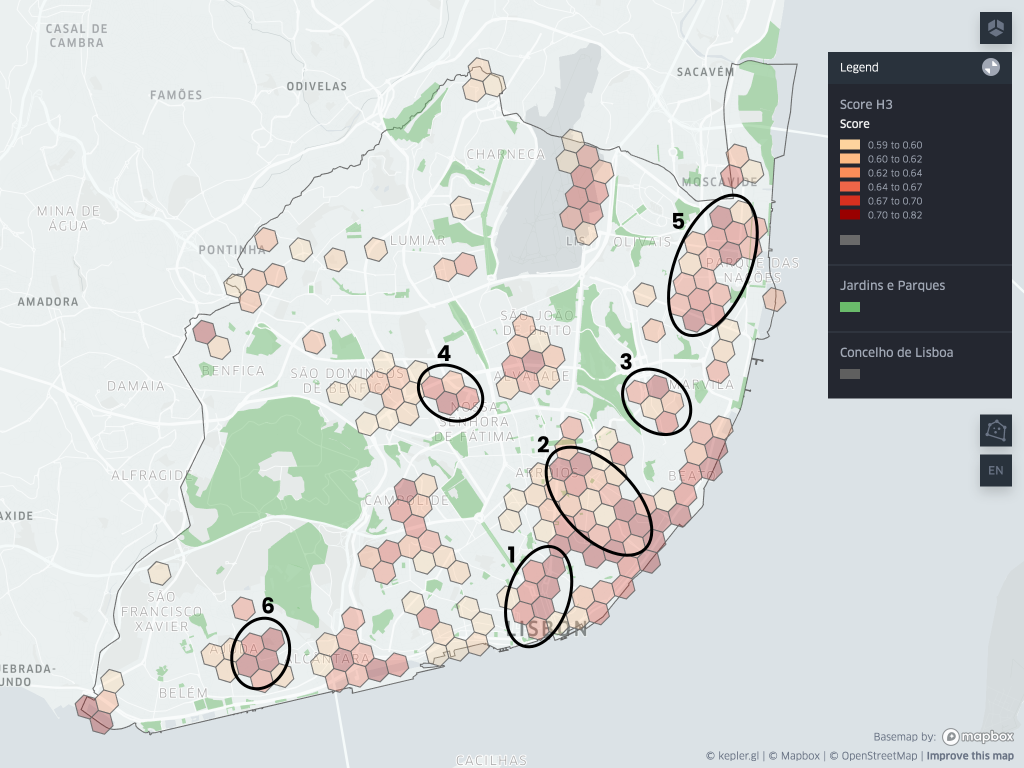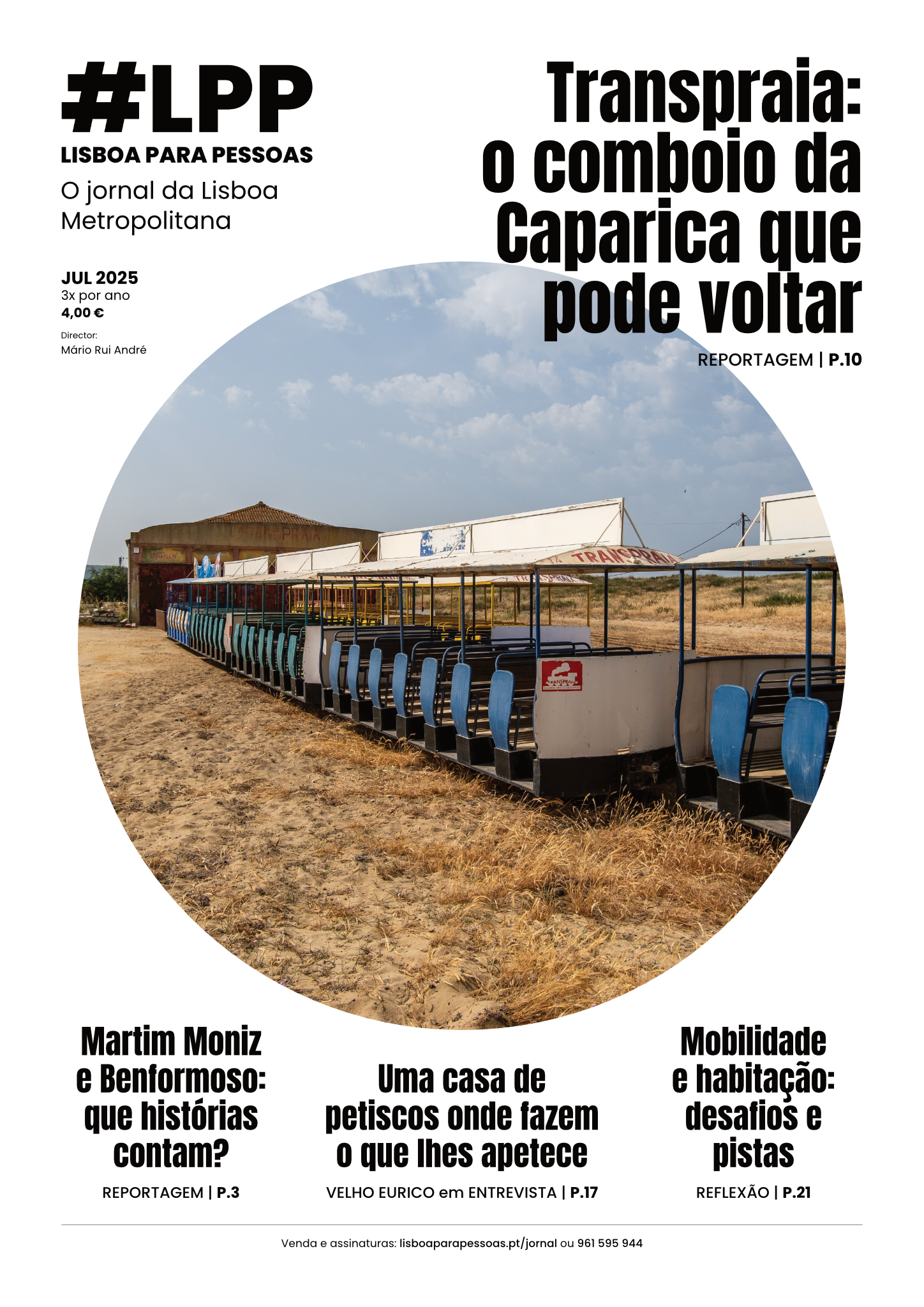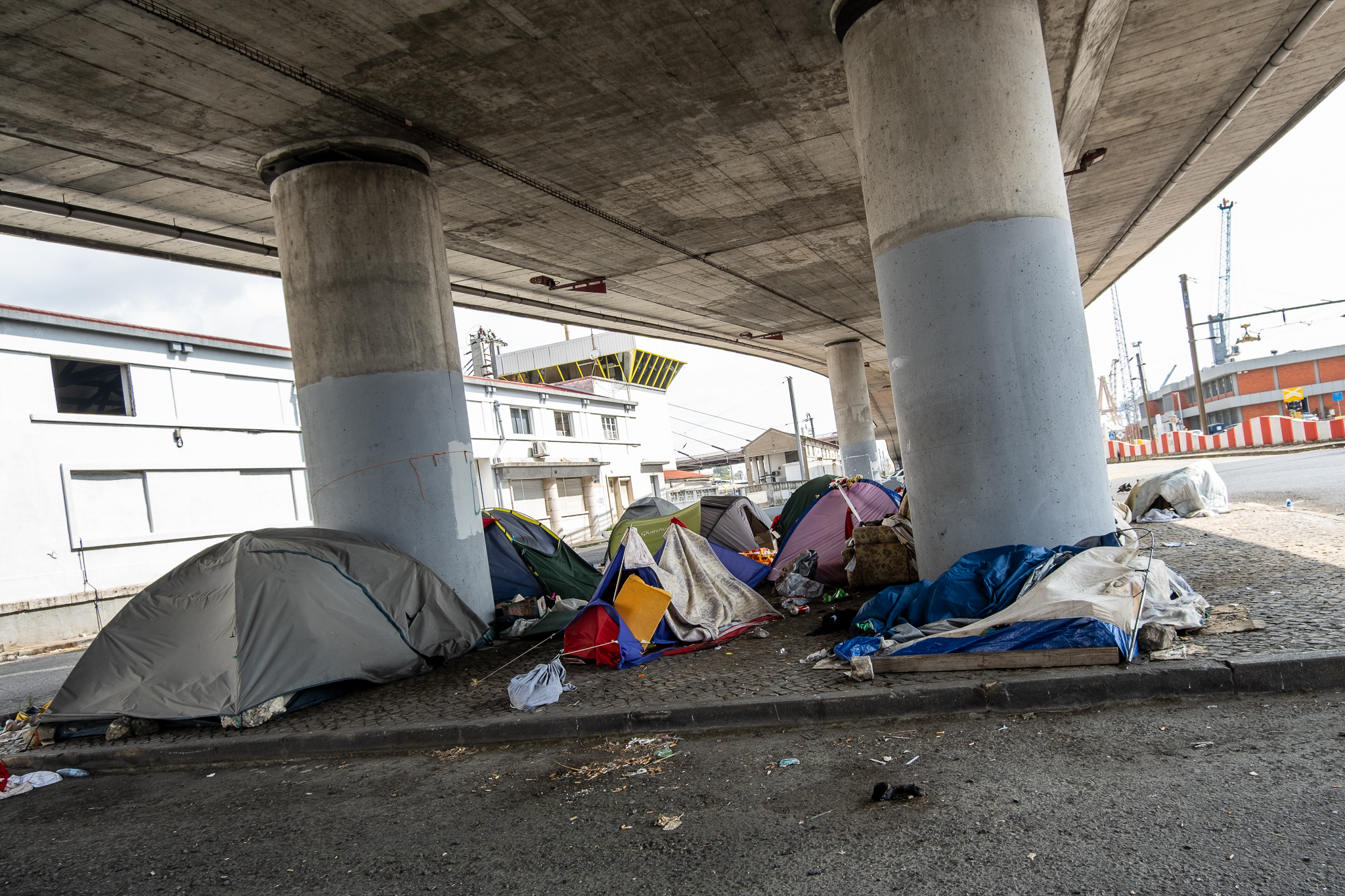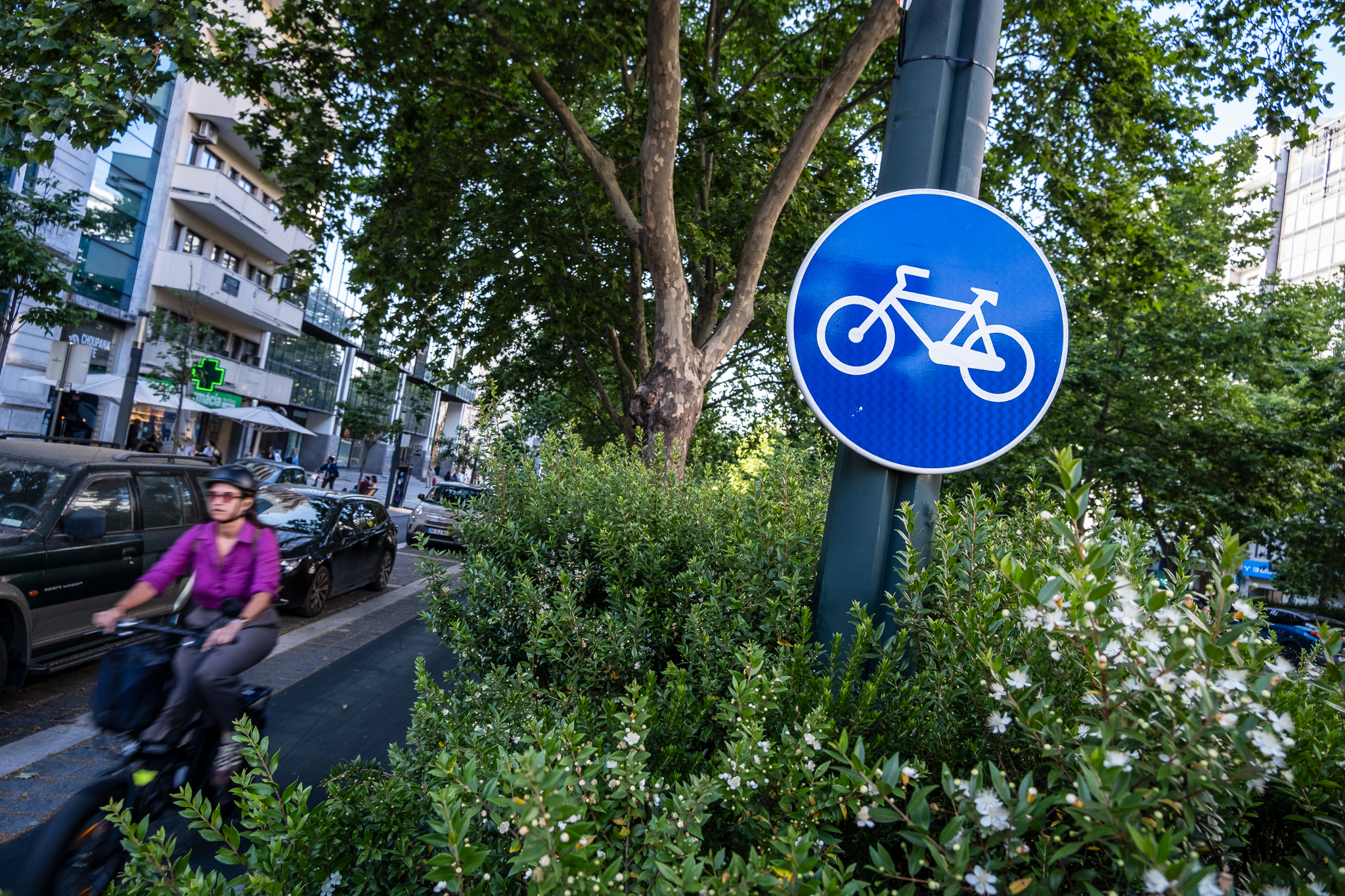The heat waves have been intensifying in Lisbon. In these extreme days, we value streets with trees and air-conditioned spaces. But there are areas where it is very hot but there are few options to cool down - areas where it would be urgent to create climatic refuges. Manuel Banza, a data scientist with a passion for Lisbon, has identified these places.
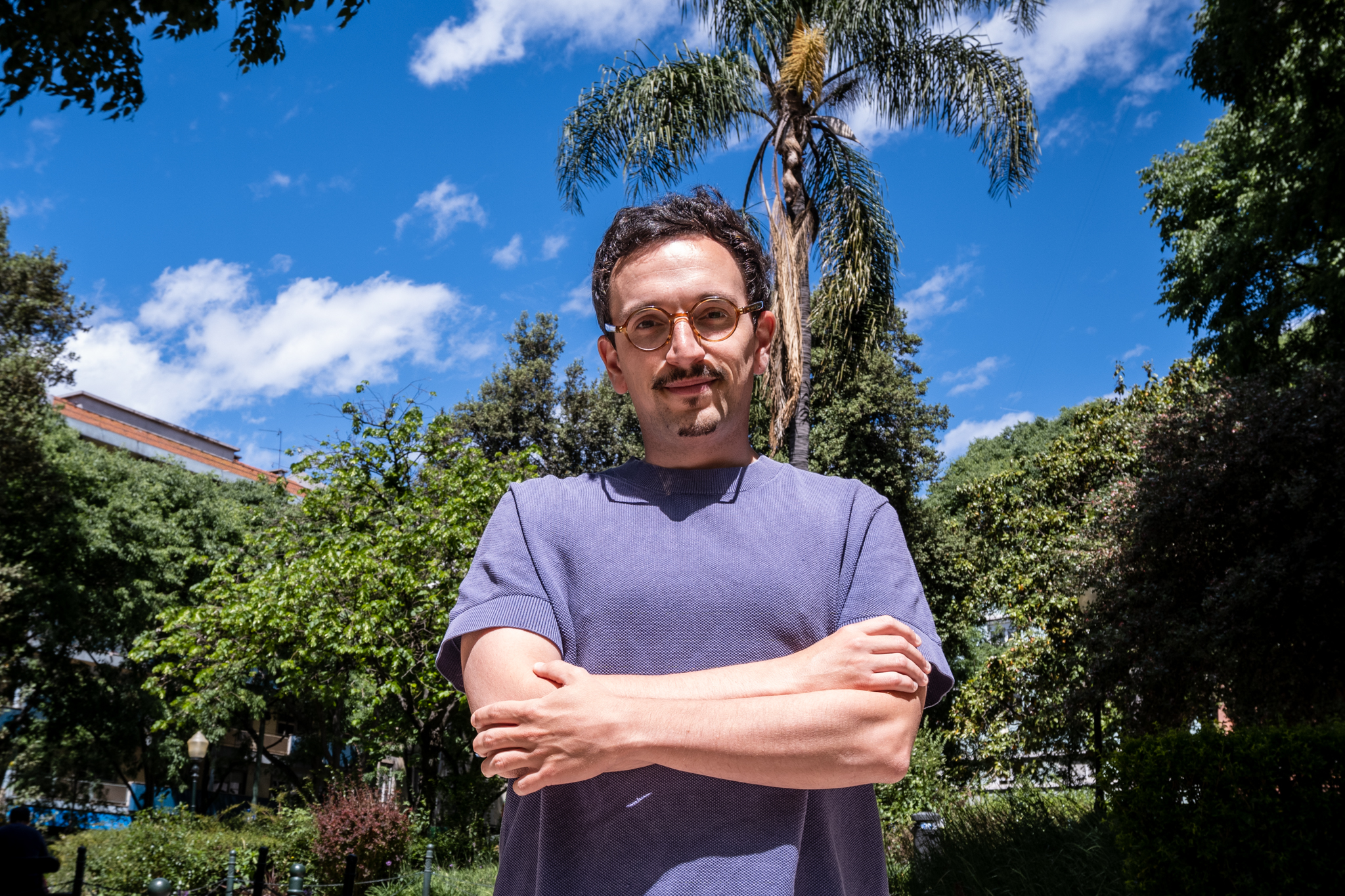
His trip to Barcelona at the end of 2022 made Manuel Banza enthusiastic. The Catalan capital's progressive urban planning and mobility policy is internationally held up as an example, and this has inspired him, once againthe young Lisboner. After seeing the climatic shelters that the Barcelona municipality created for the population to shelter from extreme temperatures, Manuel decided to take data from the city of Lisbon to understand where it is a priority to create this type of infrastructure.
"Last year there were several heat waves and we saw how very difficult it is to walk in the city with extreme temperatures. For example, here in Arroios, where I live, there are areas that have no trees and it's really, really hot. When I'm walking around the neighborhood, going to certain services or to the supermarket, I feel that the journey is very painful. That in terms of public health is not good."says the 30-year-old data scientist. "I'm at an age where I don't suffer as much from the heat. Older people and younger people suffer the most. When there are heat waves, what we see in the newspapers and on television is for these age groups not to leave the house. And maybe there are other alternatives.“
Houses are not always the best refuges. Official estimates say that between 1.2 and 2.3 million Portuguese live in a situation of energy poverty moderate and that between 660,000 and 740,000 people are in extreme energy poverty. In Lisbon, a survey presented in 2022 - and conducted by Lisboa E-Nova agency - gathered a sample of 1508 residents, of which about 40% admitted discomfort about the temperature at home during winter and 32% stated discomfort at home during summer; about 30% admitted to going out of the house to green spaces when it is hot at home.
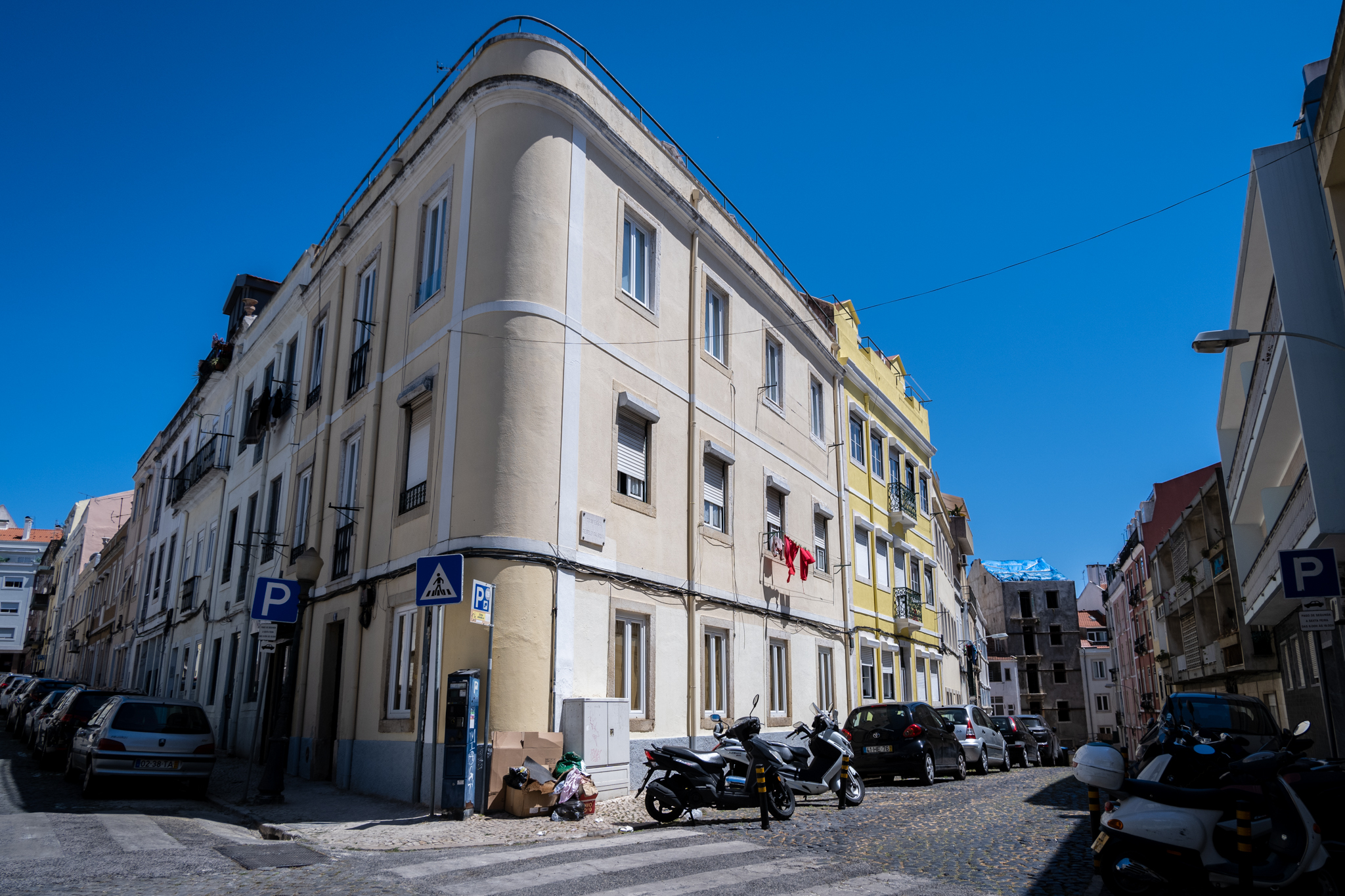
"Here in Arroios, for example"he reports, "since it is an older part of town, the sun beats down and it ends up being too hot all day in the house, which causes people to end up investing in air conditioners or fans that are also not energy efficient". For Manuel Banza, this represents "a cost. We are wasting electricity. Wouldn't it make more sense to focus on nature-based solutions for the city? In other words, we take environmental solutions and incorporate them into the city to bring down the temperature and at the same time increase the quality of life.”
Manuel's proposal is to develop a network of climate refuges in Lisbon. Knowing that there are already proposals and movements in this direction within the City Council, his contribution is at the level of data science: the young enthusiast looked at the whole city of Lisbon and the information available in open data about the areas most affected by the heat island effect and the location of infrastructures such as green spaces, libraries and trees; and realized in which parts of the city climate refuges are most needed.
The results are here (click to jump directly there).
What are refuges and why are they important?
As a consequence of climate change, cities have suffered from more frequent and intense heat waves. In the Lisbon metropolitan area, the average number of heat waves is 11 days/year and the climate projections indicate that by 2050 it will be 38 days/year and by the end of this century 64 days with average temperatures of 40 ˚C. Given this scenario, it is necessary for the city to find mitigation measures for the heat that will be increasingly felt and one of the measures identified in the report Focused AdaptationThe 2021 plan for the C40 network, of which Lisbon is part, is to create "climate refuges" or "cooling centers". outdoor or indoor locations where the population can take refuge during heat waves, benefiting from shade and fresh vegetation, or from artificial cooling systems such as air conditioning.

The climate refuges can be streets where trees and bushes create shade and cool the air; or squares with artificial shading elements like screens; or schools where, outside school hours, cool rooms with artificial or natural cooling systems are offered; or libraries where air conditioning becomes a shared resource among all, reducing energy consumption at the individual level. And if throughout this article we will focus on the refuges in response to heat waves, they also make sense in the opposite situations, of cold and heavy rains, which should also happen more frequently in Lisbon.


In Barcelona, Manuel had the opportunity to get to know a little better the network of climate refuges that the municipality has and that involves several public schools. "Refuges are not only about lowering the temperature, i.e., it is important that they offer lower temperatures, but they can be spaces for socializing and leisure."In addition to being cool, the refuges can be pleasant spaces where you can spend time, with benches where you can sit and talk, or areas with activities and games for the children. And this is something Manuel found in the Catalan capital. "Compared to Lisbon, we see that the quality of public space is much higher in Barcelona, much more benches and much more space to be, much more sidewalk, much more recreational sites and much more shade"Manuel points out. "It's a city that really has a lot of trees and that's great. Even if cars are passing by, the streets almost always have shade, at least on one side, and that allows a person to take their walk on a more pleasant route."
For the young data scientist, "the trees are even one of the most important factors in lowering the temperature felt in the city. It is very different to walk down Rua Pascoal de Melo, which has plenty of shade, compared to Almirante Reis. Why is that? Because Pascoal de Melo Street, from one end to the other, is full of large trees, on both sides, and this lowers the temperature. But most of the streets in Arroios don't have as many trees as this one, and many even have none at all." In August, the temperature difference from Pascoal de Melo to Almirante Reis can be five degrees.
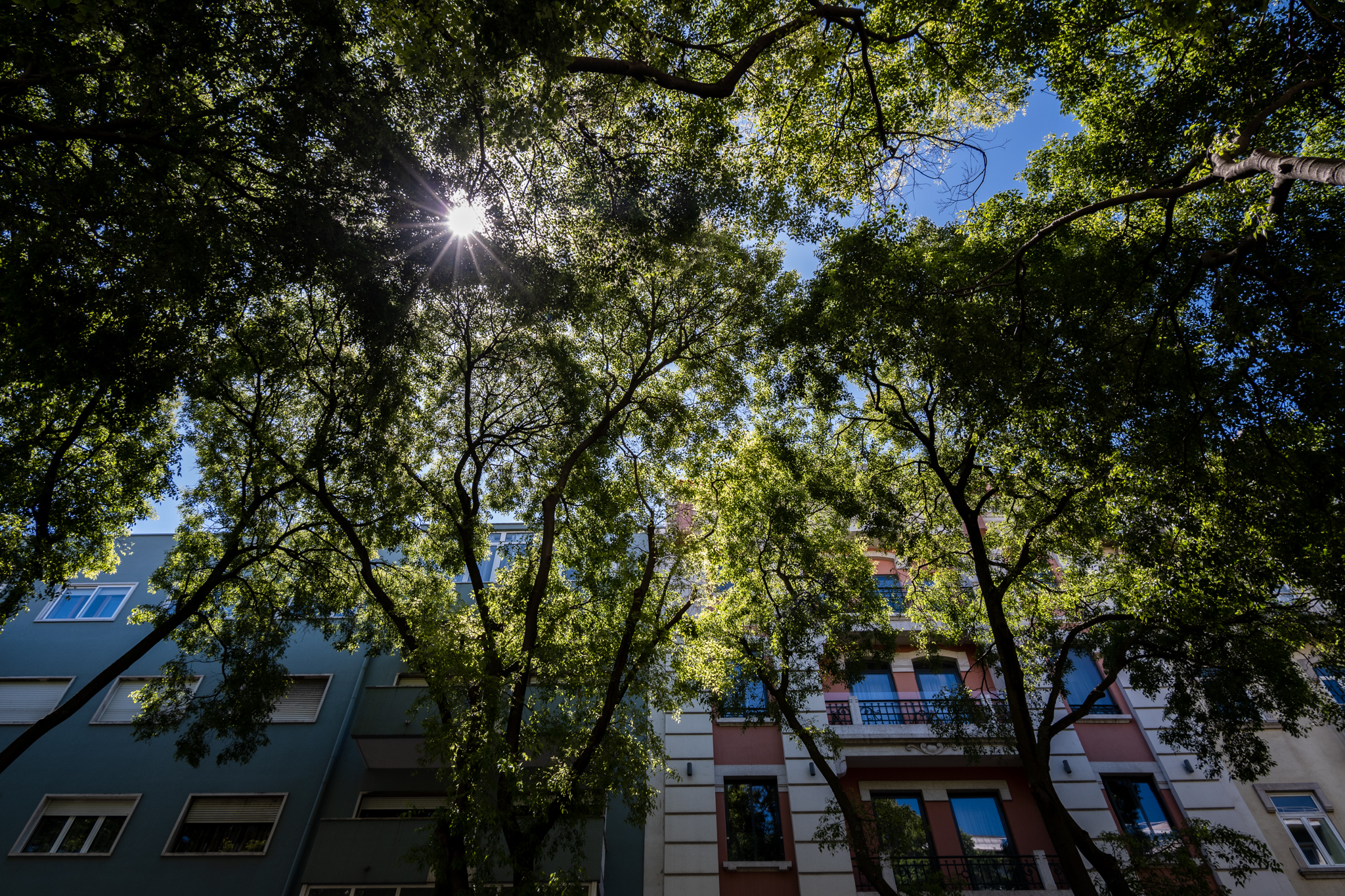
Where is there the greatest need to create a climate refuge, according to this analysis?
A Lowthe Alto de São João/Morais Soaresan area in Chelasthe neighborhood of Rêgo, o Park of Nations and a part of Help. These were the five areas of the city of Lisbon that Manuel Banza detected as priorities for the installation of climate refuges. "My analysis went through identifying where the most serious cases are"The data scientist points out that this is where there are no green spaces, libraries, or other facilities that can easily be mapped as climate refuges on an online platform and identified on the spot with a sign. "I tried to figure out which parts of the city don't have these services nearby - five, ten, fifteen minutes walk away - and where we're going to have to create a service from scratch. Where we're going to have to create a garden, or a shaded plaza, or plant trees in the street, or take a building and make it open to the public."
You can explore the interactive map here:
To get these results, Manuel divided the territory of the city of Lisbon in small hexagons and defined a scoring scale based on five factors: the usual values of heat build-up in the urban environment, in the proximity to gardens and parksin the resident populationin the concentration of trees and in distance. to municipal libraries These criteria and the methodology used can be known in more detail here.
Below, you can see in more detail the six places in Lisbon where climate refuges are most needed to help lower the temperature:
1 - Low

Lisbon's downtown, located near the river, is one of the most touristic and historical areas of the city. Even though it is close to the sea, it is still one of the areas where you can feel the heat island effect and the lack of trees to mitigate the heat. Like other areas of the city, it is also an area with few gardens and parks nearby. It is, however, an area that has been decreasing in number of residents, but where many hotels and accommodations are located.
- Manuel Banza
2 - Alto São João/Morais Soares

The separation between the parish of Arroios and Penha de França made by Rua Morais Soares is the square kilometer with more population in Portugal. It is an area with several residents and yet it is one of the areas of the city with fewer trees and without any garden or park of medium size to mitigate heat waves. It is also an area very affected by the heat island effect, especially with the surrounding areas. This situation is in fact felt in much of Arroios, and greatly aggravated by the scarcity of green spaces and trees in the parish.
- Manuel Banza
3 - Chelas

One of the most densely populated areas of Lisbon, it is also one of the most historically forgotten areas of the city. The need to house people coming from precarious housing, as well as the rehousing policies that were based on social housing neighborhoods with architecturally and urbanistically deficient buildings, have forever marked the fate of this area. The lack of gardens, parks, and recreational spaces makes it essential to create climatic refuges for the local population.
- Manuel Banza
4 - Rego Neighborhood

Like Chelas, the Rego neighborhood is also a highly populated and centrally located area of Lisbon. Being a residential neighborhood, it was expected that there would be more gardens, libraries and other spaces that could mitigate the heat island effect. However, this is not the case.
- Manuel Banza
5 - Park of Nations
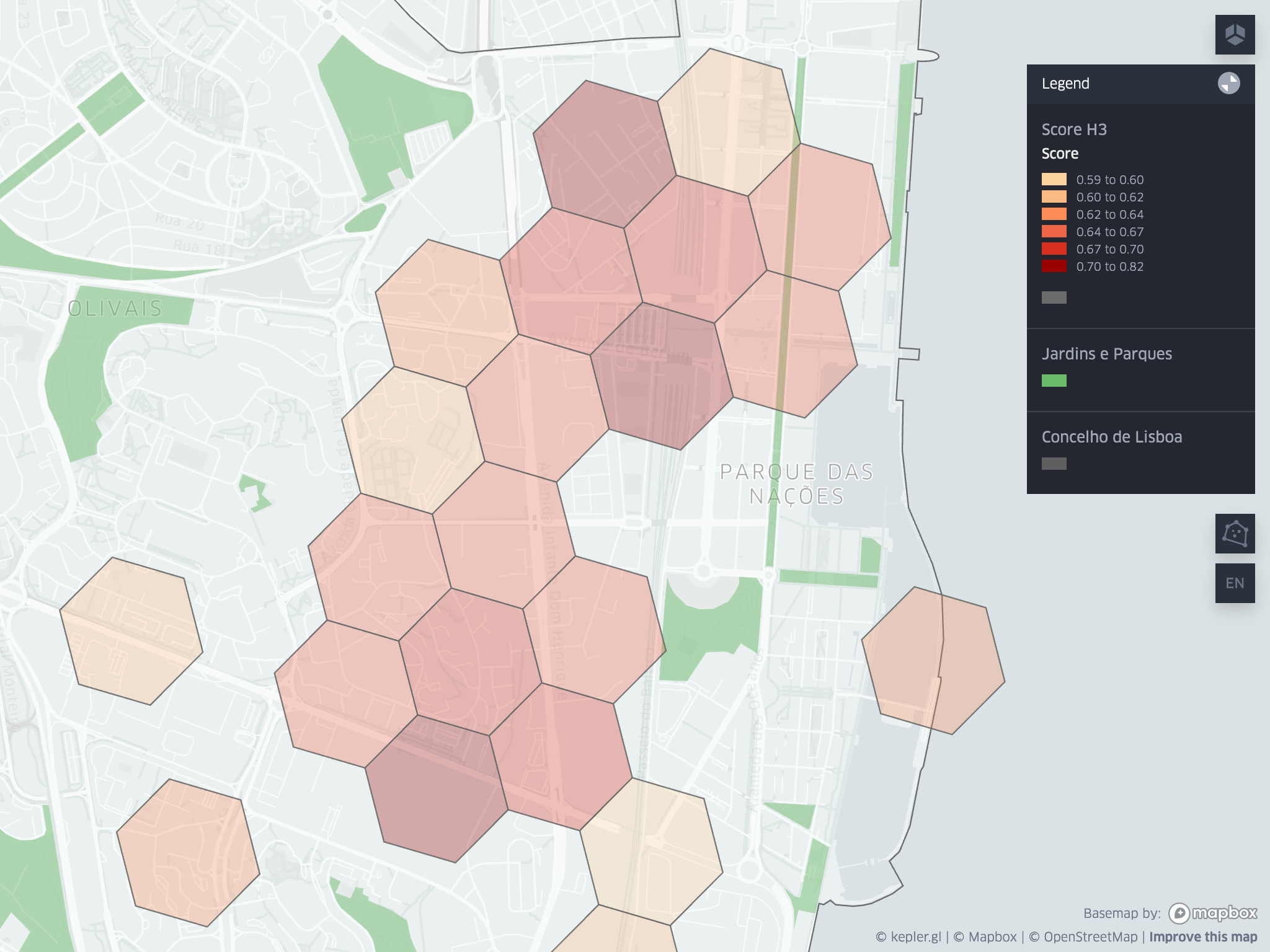
Although this area has several gardens and many trees, compared to other areas of the city, it is the area that suffers the most from the heat island effect. This fact is due to the fact that the new construction done in this part of the city at the time of Expo'98 did not take into consideration the environmental impact that these buildings had on the air circulation between buildings. Since they are tall buildings, they make air circulation even more difficult. Walking between the buildings in Parque das Nações, the breezes from the Tagus River don't even reach there. That difference of a few meters registers increases of 2ºC. In addition to the current problem, it is known that climate change will be felt more strongly in this part of Lisbon when it comes to heat waves. Something that only reinforces the need to create shelters and other measures.
- Manuel Banza
6 - Help
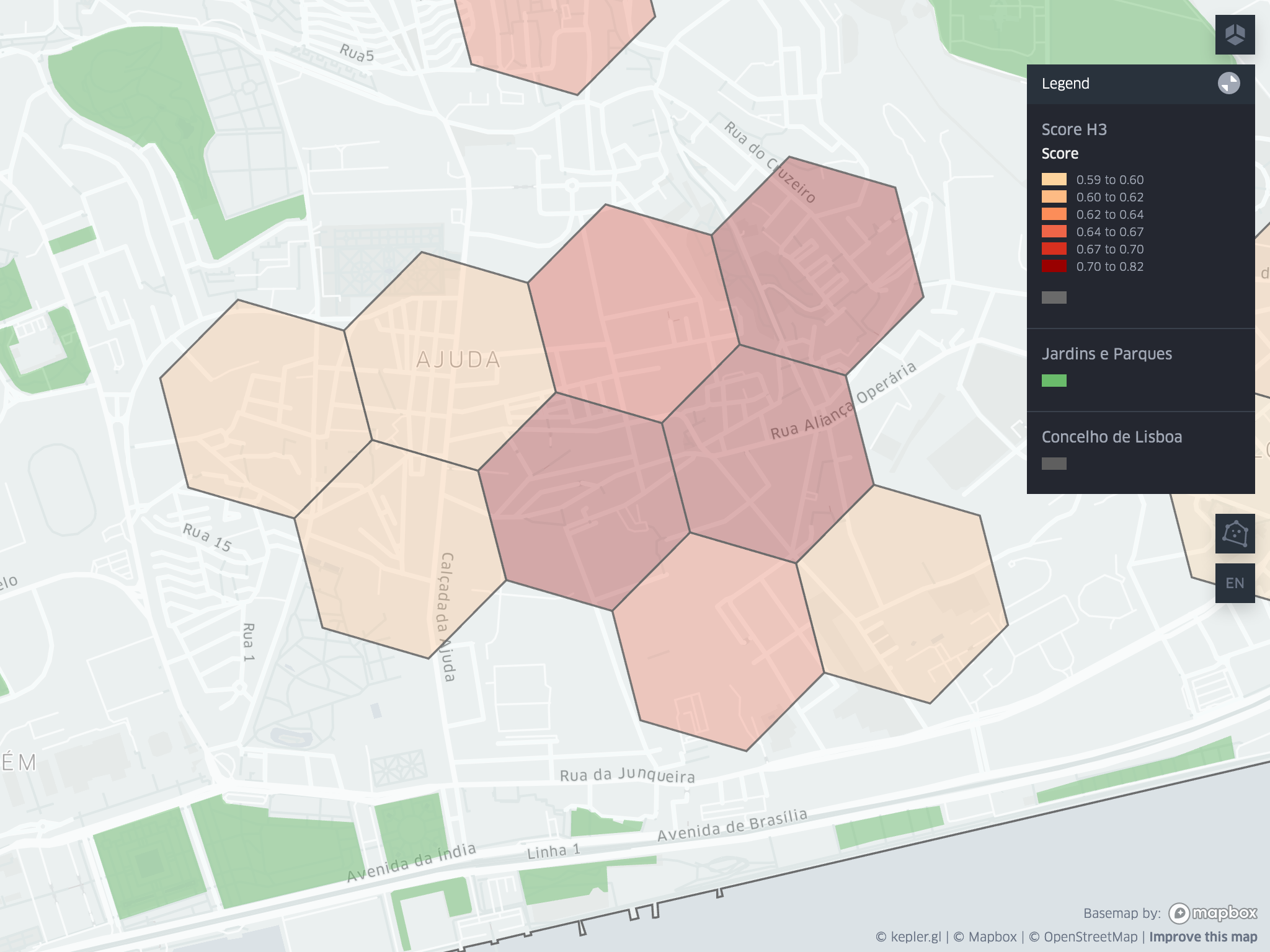
Residential area with a high population density. Although on average it is less than 10 minutes from the nearest garden, it ends up being very affected by the heat island effect.
- Manuel Banza
How do I know which sites have priority?
Dividing the territory of the municipality of Lisbon into hexagons of about 105 thousand m2Manuel Banza has defined a scoring scale and five criteria, each with a distinct importance:
- the Urban Heat Island effect (UHI) data in the city of Lisbon - 30%;
- the walking distance to the nearest garden or park - 25%;
- the resident population in each block, according to the 2021 Census - 20%;
- the concentration of trees in the vicinity - 15%;
- walking distance to the nearest municipal library - 10%.
One of the most important criteria in this analysis was the so-called Urban Heat Island (UHI) effect, that is, the accumulation of heat that, during the day, is absorbed by materials and, at dusk, begins to be released. This effect was thoroughly studied at the request of Lisbon City Hall, in 2020/21; the UCI values were calculated with the Lisbon Airport area as reference point, and can be seen on the map below. This map also shows the location of several equipments that allow the population to refresh themselves - besides gardens and parks and libraries, Manuel also mapped water features such as public swimming pools, drinking fountains, lakes and fountains.
In this work, the data scientist used a system of hexagons known as H3It is one of the best ways to handle geospatial information - it allows easy comparison and analysis of data from different sources, since it treats them in the same format and with the same granularity.
As for the information itself, Manuel took it from municipal open resources - as is the case with the location of urban gardens and parks, libraries e grove -, but also from other sources. The resident population, for example, came from the 2021 Censusof the INE (BGRIs). And there were data sets that, even though they are openly and officially available, the young enthusiast preferred to collect manually or use someone else's work. For the calculation of proximity to green spaces and libraries, the city's pedestrian network was used through the community platform OpenStreetMap; in this analysis, an average of all intersections between at least two streets within each hexagon was taken, and in turn it is identified whether that hexagon would be within a pedestrian distance of up to 5 minutes, up to 10 minutes, or more than 10 minutes from a garden or park, or a library.
Readers most interested in data science you can read in Manuel Banza's blog more details on how this analysis was done.

In a future review of this work, Manuel Banza I would like to add shade data throughout the day to check not only streets that are more exposed to the sun, but also gardens that cannot be considered refuges - This is the case of Alameda Dom Afonso Henriques, which has few trees and little shade.
This analysis is not the first work that Manuel Banza has voluntarily presented to the city. The 30-year-old says he is enthusiastic about the idea of citizens "in their free time, outside of their work, get together in their neighborhood and develop projects for the benefit of the community, of the city". "This would be a way for the city council to use the resources of the population, of people who are interested in the city and who are willing to contribute. In other words, instead of hiring more employees, there are already people who probably know about that topic, who even have an empirical knowledge of living in that area and who are willing to give to the city." For Manuel, participating in the city can also be this way.
"In Portugal, unfortunately, the role of climate change in cities is not yet talked about as much as in other cities, and there are many people who are not yet awake to this issue"points out the data scientist. "We often end up in a divisive issue, where some say we have to be radical in the way we act in the city. And others say things have to be gradual. And we lose a lot of time on this one in this duel." In this work, Manuel Banza sought to "show concrete things" as areas of the city where a lot of heat accumulates and no shelter facilities nearby. "This is such concrete things in people's lives. They may not be awake to the topic, but the first thing they will do is how is their neighborhood. I think that process makes them have a greater sense of belonging to their place. They'll try to take care of it, they'll try to know more and how they can change something."

"Lisbon is a big city, but even so there is always room for improvement. And when I go to other cities in Europe, like Barcelona, I get this urge to bring that ambition that existed there and that made those cities more human, more people-friendly, and that reversed the way we see mobility"Manuel points out. "And I think that's a path that should be taken by everyone. I hope my analyses can help that, if only to alert people to issues like climate change, the allocation of public space for leisure issues, increasing public health in the city, how we can make tourism and local housing compatible with neighborhood life in a healthy way."
As for climate refuges, for Manuel, it would be important to already publicize those that exist. "I think that's the most important thing, because it's a matter of communication and explaining to people, having a map where they can look for refuges." Lisbon City Hall is developing this work through the Municipal Civil Protection Service; it is also working on a project entitled Cooling Down The City in order to increase the afforestation of streets and squares, and to combat the so-called Urban Heat Island effect - more details about these two initiatives will be published soon in LPP.
For Manuel, it is important that the creation of refuges involves the population, listening to the needs and wishes not only of the residents but also of the users of the places, i.e. those who work, study, or move around in a particular area in need of a refuge. "In very residential areas, we can see that there aren't many services around, so inevitably the creation of refuges will have to involve public space, the streets, the squares. In other places where there is a greater diversity of services, maybe we can think of a different system here, for example, converting public buildings into spaces that are open to the population, where people can take refuge during hot hours."

